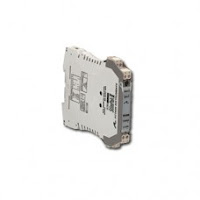 |
| Examples of Coriolis Mass Flow Meters Rheonik |
- Directly measure mass flow based on the principle of measurement.
- No "moving" parts (except the slightly vibrating sensor tubes).
- Coriolis sensors have the ability to measure flow of non-conductive fluids.
- Measure the mass flow rate with high accuracy.
- Instruments can be applied across a wide usable measurement range.
- Deliver density measurement based on oscillating frequency.
- Not materially impacted by fluid viscosity or density.
- Coriolis flow meters also do not need lengthy straight pipe sections upstream or downstream of the sensing unit.
Selection and Installation Recommendations
Some considerations for product selection and installation of Coriolis mass flow meters:
- Rapid temperature changes within the measured medium can impact measurement accuracy.
- Wide ranges of connection types are available, specify the best match for your system.
- Select sensor tube construction material to accommodate media characteristics.
- For liquid measurement, the sensor tube will extend downward from a horizontal pipe run.
- As with most industrial products, there may be restrictions on where the device may be used. For example, not for use in aircraft. Assure that your application conforms with the intended usage of the instrument.
- Install at least one tight shutoff valve adjacent to the instrument for purposes of zeroing. Isolation valves for inlet and outlet are preferred.
- Follow manufacturer recommendations for pipe supports, if required, at inlet and outlet sides of the unit
- Avoid installation at locations with high levels of vibration or strong electrical fields.
- Locate the sensor unit at the lowest practical level in the piping system. This helps avoid collection of gas bubbles in the sensor tubes.
- Sensor tubes need to be completely filled with subject medium to obtain accurate measurement.
- Avoid the use of flexible connections and reducers at the unit connection points, unless in accordance with specific manufacturer guidelines.
The Coriolis flow meters of different manufacturers may have some particular recommendations, all of which should be followed to insure the best available performance, safety, and longevity of the unit.
Share your process instrumentation challenges and requirements with process measurement specialists, combining your process knowledge and expertise with their product application experience to develop effective solutions.

